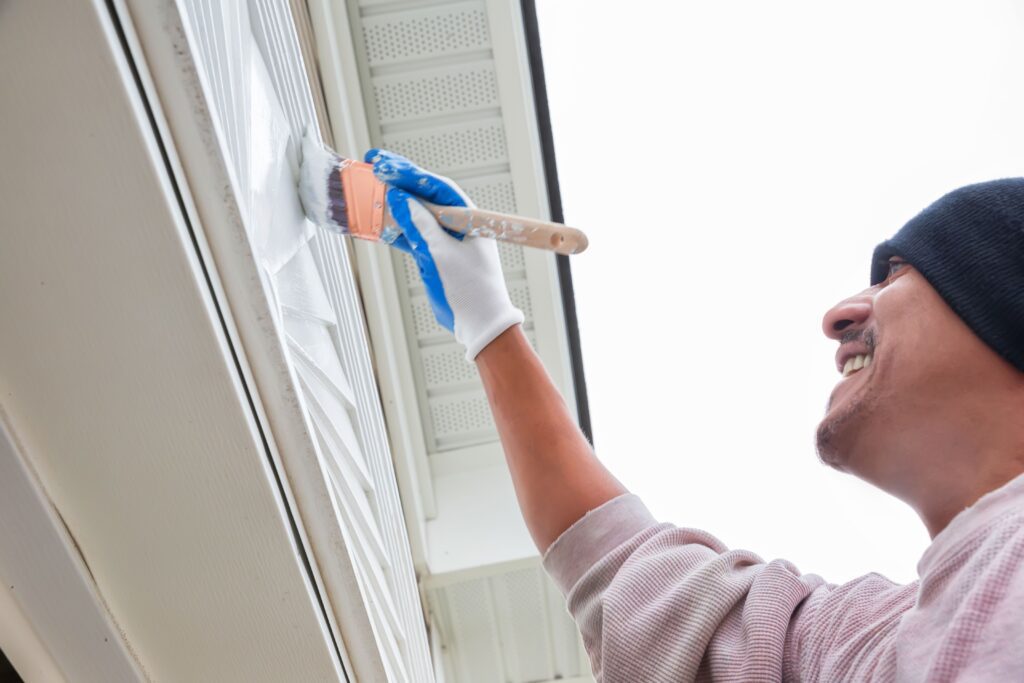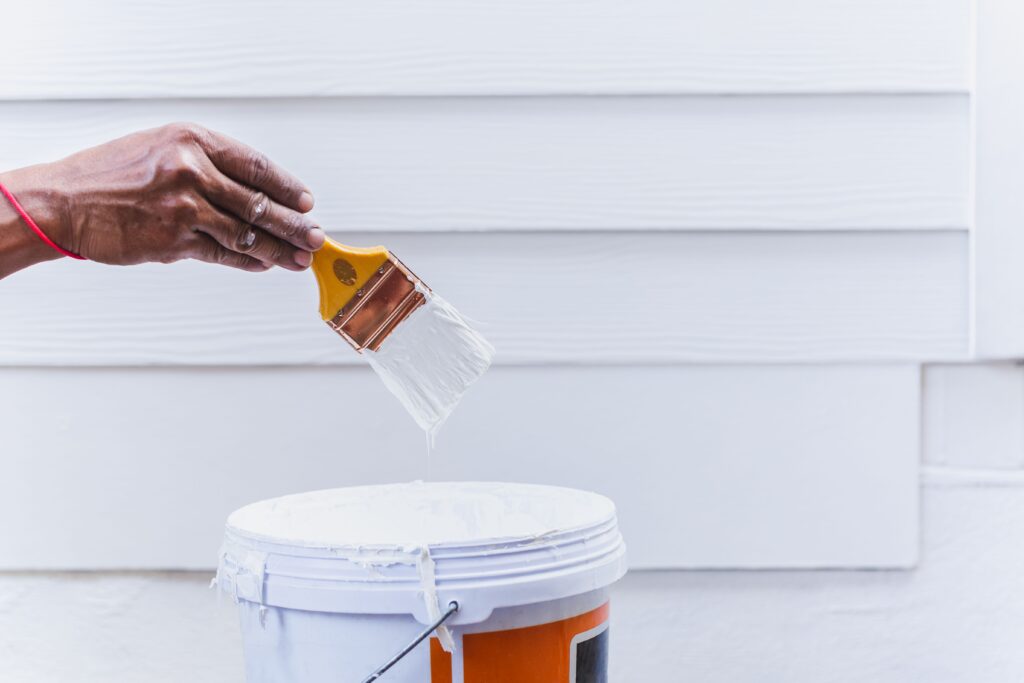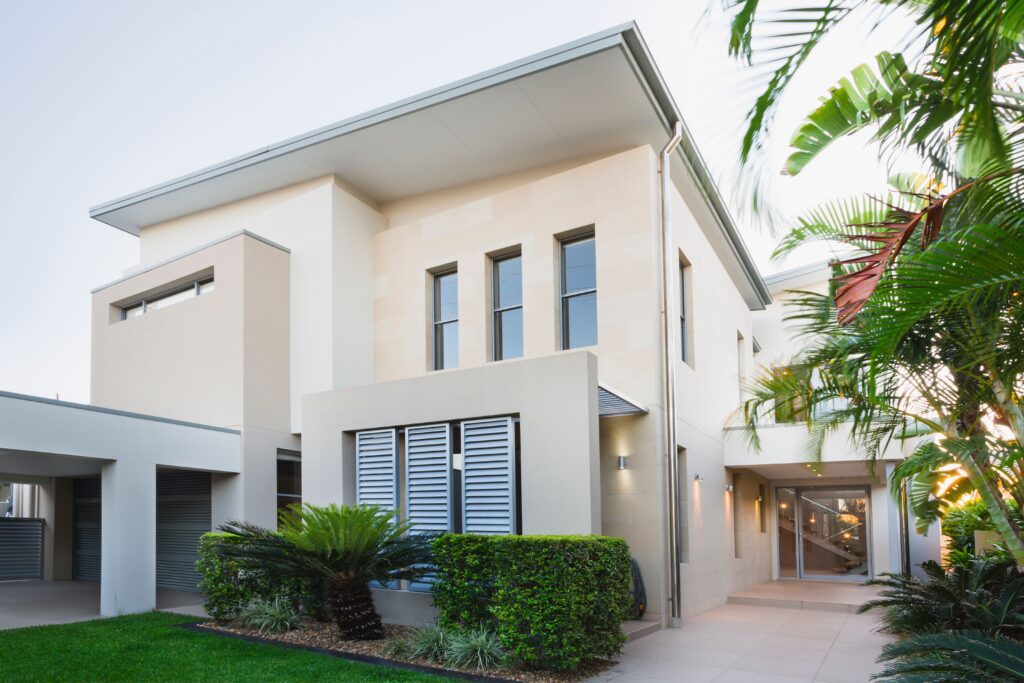
How To Get Professional Results With Do-It-Yourself Exterior Home Painting
When it comes to transforming the look of your home, few things have as big of an impact as a fresh coat of paint. Exterior home painting is a fantastic way to rejuvenate your property’s curb appeal and make a lasting impression. While hiring professionals like Fresh Coat Painters of Allen can guarantee exceptional results, there’s a sense of accomplishment that comes from tackling the job yourself. In this guide, we’ll show you how to achieve professional-quality results with DIY exterior home painting.
Preparing for Exterior Home Painting Success
Preparing for success is the key to achieving that professional finish you’re aiming for. In this section, we’ll dive into the crucial steps of gathering supplies and cleaning and prepping surfaces before you even dip that brush into the paint.
Before you begin your exterior home painting project, it’s essential to have all the necessary supplies at your fingertips. A well-equipped painter is a confident one, so make sure you’ve got:
- Paint and Primer: Choose high-quality exterior paint that’s specifically formulated for outdoor use. Opt for a primer if you’re dealing with surfaces that haven’t been painted before or have some underlying issues.
- Brushes and Rollers: Different brushes and rollers are designed for various surfaces and finishes. A wide brush for large areas and a smaller one for detailed work will be your best friends.
- Drop Cloths: Trust us, your lawn and driveway will thank you for this. Protect your surroundings from splatters and spills with durable drop cloths.
- Painter’s Tape: Use painter’s tape to create clean lines along edges, windows, and other areas you want to keep paint-free.
- Sanding Materials: Sandpaper or sanding blocks are crucial for smoothing out rough patches and ensuring your paint adheres properly.
- Cleaning Supplies: Rags, buckets, mild detergent, and a scrub brush will help you remove dirt, grime, and any loose paint from the surfaces.
- Safety Gear: Don’t forget gloves, safety goggles, and a dust mask as these will keep you protected from potential hazards while painting and prepping.
Now that you’ve got your arsenal of supplies ready, it’s time to give your exterior surfaces the attention they deserve. Start by giving your surfaces a thorough wash. Use a mixture of mild detergent and water to remove dirt, grease, and other contaminants. A pressure washer can be a helpful tool here, but a garden hose and scrub brush work just as well. If there’s old, peeling paint, use a scraper to remove it. Follow up with sanding to smooth out rough spots and create a suitable surface for the new paint to adhere to.
Check for any cracks, holes, or damaged areas on the surface. Fill these imperfections with an appropriate filler and allow it to dry. Sand the filled areas for a seamless finish. If you’re dealing with bare wood or a surface with a lot of repairs, applying a primer is a wise step. Primer helps the paint adhere better and promotes a uniform finish.
Choosing the Right Paint

How To Get Professional Results With Do-It-Yourself Exterior Home Painting
When it comes to achieving professional-grade results with your exterior home painting project, the type of paint you choose and the color you pick can make all the difference. Before you dive into the colorful world of exterior home painting, take a moment to consider the paint type that suits your surfaces best:
- Latex Paint: This water-based paint is a popular choice for exteriors due to its durability, flexibility, and resistance to cracking. It’s also easy to clean up and dries relatively quickly.
- Oil-Based Paint: While oil-based paints are known for their smooth finish and excellent adhesion, they take longer to dry and emit strong fumes. They are often used for trim and surfaces that require a high level of protection.
- Acrylic Paint: A blend of water and acrylic resins, this type of paint offers excellent durability, UV resistance, and color retention. It’s a fantastic choice for homes in sun-drenched areas.
- Stain vs. Paint: If you have a wooden exterior, consider using a wood stain instead of paint. Stains penetrate the wood, enhancing its natural grain while providing protection against the elements.
Now that you’ve got the paint type sorted, it’s time to dive into the realm of colors. The right shade can dramatically transform the look of your home and elevate its curb appeal. Now, take a moment to appreciate your home’s architectural style. Traditional homes may lean towards classic hues, while modern designs often embrace bold and contrasting colors.
While you want your home to stand out, you also want it to harmonize with the surrounding homes. With that in mind, opt for colors that complement the neighborhood vibe. However, paint colors can look different under different lighting conditions. Before you go all-in, test your chosen colors on a small section of the exterior and observe how they appear during different times of the day.
Remember that trends come and go. While that ultra-trendy color might be captivating now, consider whether you’ll still love it in a few years.
The Exterior Home Painting Process
You’re in the homestretch of your exterior home painting project, and it’s time to dive into the heart of the matter: the painting process. In this section, we’ll walk you through the essential steps to ensure your exterior shines with a professional finish that’ll make you proud every time you pull into the driveway.
Before you dive into the vibrant world of colors, your surfaces need to be prepped and ready. You must first give your exterior surfaces a thorough cleaning to remove any dirt, dust, or debris. A clean canvas ensures that the paint adheres properly and results in a smooth finish.
Then, take a close look at your exterior – any cracks, holes, or uneven spots should be addressed. Fill them in, sand them down, and ensure a uniform surface that’s ready to be transformed. Afterward, protect areas you don’t want to paint by using painter’s tape as it’s your secret weapon against stray brush strokes.
Primers might seem like an extra step, but they’re essential for ensuring a lasting and polished paint job:
- When to Prime: If you’re painting over bare wood or a porous surface, a coat of primer is your best friend. It seals the surface, enhances adhesion, and provides an even base for the paint.
- Choosing the Right Primer: Different surfaces require different types of primers. There are primers for wood, metal, masonry, and more. Make sure to choose the one that suits your surface material.
- Smooth Operator: After applying the primer, lightly sand the surface to ensure it’s smooth and ready for the main event – the paint!
When all is said and done, it’s finally time to unleash your creativity and bring life to your home’s exterior. As you embark on the painting process, remember that patience and attention to detail are your greatest allies. A well-prepped surface, a strong primer, and careful application of paint will reward you with an exterior that radiates professional results. Your home will be the envy of the block, and you’ll have the satisfaction of knowing you did it all yourself.
Finishing Touches
As your DIY exterior home painting project nears its completion, it’s time to focus on the finishing touches that will truly make your efforts shine. Start by carefully removing the painter’s tape that protected specific areas. Peel it off at a 45-degree angle to prevent the paint from tearing, ensuring your lines are crisp and clean. As you unveil your freshly painted surfaces, inspect the edges and make any necessary touch-ups for a flawless finish.
With the tape removed and edges perfected, turn your attention to cleaning and inspecting your masterpiece. Wipe away any paint splatters or smudges, and closely examine the surfaces for missed spots or uneven patches. Natural light can reveal imperfections, so assess your work at different times of the day. If touch-ups are needed, mix your paint thoroughly, feather the edges, and apply multiple thin coats to seamlessly blend them with the surroundings. These finishing touches will not only enhance your exterior’s appearance but also solidify your achievement in achieving professional-grade results.
Conclusion

How To Get Professional Results With Do-It-Yourself Exterior Home Painting
DIY exterior home painting can be a rewarding project that adds value and curb appeal to your property. While it requires careful preparation, attention to detail, and patience, the results can rival those achieved by professionals. By following these steps and taking your time, you can achieve a stunning exterior paint job that will make your home the envy of the neighborhood. And if you’re ever in need of professional assistance, consider reaching out to experts like Fresh Coat Painters of Allen to ensure an exceptional finish.
Professional Expertise from AMD Remodeling – Exterior Home Painting
The fresh coat painters of Allen TX, understand the nuances of exterior home painting that lead to remarkable results. AMD Remodeling specializes in bringing your vision to life, ensuring every edge is sharp and every coat is flawless. If you’re looking for a touch of professional expertise to take your project to the next level, consider reaching out to our dedicated team. We combine skill, quality paint, and a commitment to excellence, making your exterior home painting venture a true masterpiece.
Contact us today at (469) 547-5887 or visit our website at AMD Remodeling to learn more about our services and schedule a consultation.
